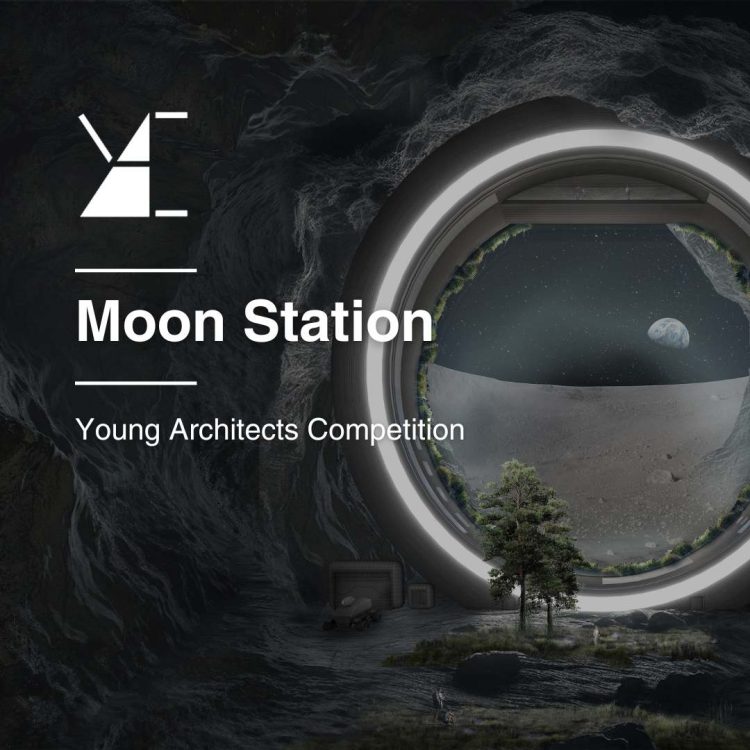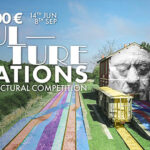The call for ideas MOON STATION was launched on March 2023 by YAC – Young Architects Competitions – and the European Space Agency’s Topical Team to imagine the first moon research base.
An outstanding jury panel including Julian Ocampo Salazar (BIG – Bjarke Ingels Group), Georgi Petrov (SOM – Skidmore, Owings & Merrill), Sandra Häuplik-Meusburger (TUW – Vienna University of Technology), Francesco Sauro (ESA Topical Team On Planetary Caves), Xavier De Kestelier (Hassell), Melodie Yashar (ICON), Daniel Inocente (Blue Origin), Nicola Scaranaro (Foster+Partners), René Waclavicek (Liquifer System Group),
among the others, evaluated the project proposals selecting those better responding to the competition’s brief. The winning projects have been awarded with a total cash prize of € 15,000 distributed to the first seven teams ranking.
In particular, the Italian team Earth + Beyond ranked first and was rewarded with € 8,000. The project was made by Silvio De Mio focused on designing a solution that will make this possible. It proposes an infrastructure that reacts to explorational needs, pressurizing the Lacus Mortis lava tube by sealing its natural hole. The design aims to achieve this goal by building a 3d-printed ring juxtaposed right inside the entrance of the tunnel. On its hole, a special translucent membrane is placed. Through time, day after day, the natural Moon cavity will be pressurized with breathable air, and the subselene environment will take shape. Here, the human being will mark a new chapter in exploration and a unique organic lunar environment will grow.
The second prize of € 4,000 was awarded to the Russian participant making the team Maksim Bazaev, designing a module that includes everything necessary for the life of astronauts: 5 individual rooms, showers and toilets, a common kitchen area, a small laboratory, space for simulators, and a recreation area. The module is also equipped with a complete list of backup life sources. It also provides a airlock for going outside and the area for putting on.
The team TEAM_SH from South Korea ranked third and won a cash prize of € 2,000 with a project proposal submitted by Seongha Han and Seunghyun Wang – with an innovative approach than can be replicated across all existing lunar caves, allowing for the creation of smooth, interconnected settlements that utilize the natural resources and formations of the Moon. ‘The Blooming ‘ is composed of a research facilities where researchers can study the lunar environment, planetary history, and potential resources, along with a residential facilities within the caves for living on the Moon. These components are connected by the Main Core. The lunar surface research facilities are designed with protective walls that mimic the appearance of natural lunar craters, providing a safe environment for conducting long-term missions in the challenging lunar conditions. This unique architectural design seamlessly blends with the surrounding lunar landscape, symbolizing the potential for humans to adapt and coexist harmoniously with the moon’s environment. At the heart of these facilities lies the Main Core, which serves as a central hub for operations and enables easy expansion of additional residential facilities as the population of settlers on the Moon grows. As each unit is completed, it extends along the path of the Lava Tube, utilizing the natural cave system present on the Moon. Once the interior of the cave is filled with residential facilities, the Lava Tube itself transforms into a thriving city.
Two Gold Mentions rewarded with € 500 each follow in the ranking. The Polish team lunae abyssi featuring Wiktoria Dziadula, Agata Mintus, Paula Drozdowska, Wojtek Fikus, Leszek Orzechowski, Maciej Rebisz and Jakub Pietryszyn focused their attention on a core module that serves as the central hub, providing essential life-support system for the different units and maintaining a stable pressurized environment. It is built using a specially-designed aluminum unit transported from the Earth. During the setup phase, the core module inflates on outer shell to a pressure of 0.5 bar, creating a protective barrier and a convenient area for accessing lightweight suits. A large technical airlock allows the transportation of modular elements into the outer shell, enabling the construction of inner modules and systems.
The team Lunar Tardigrade from China featuring Shuqi Li, Xiaotian Cheng, Feiyu Gao, Hanqi Zhang, Ran Wang, Ke Ye, Naisi Hua and Jiayang Jiang, rewarded with a Gold Mention, proposed a project with a building based on a skeleton made of shape-memory alloys transported from the Earth to the Moon, 3D printed walls made from Lunar soil collected on-site, and an exterior cladding of crawler structures. The building modules are connected by a watertight closing system, allowing each individual module to operate independently with a compressed airlock. This makes it easier to mitigate the impact of any issues with one module on the others.
WINNERS
1ST PLACE
Silvio De Mio
Italy

2ND PLACE
Maksim Bazaev
Russia

3RD PLACE
Seongha Han and Seunghyun Wang
South Korea

GOLDEN MENTIONS
Wiktoria Dziadula, Agata Mintus, Paula Drozdowska, Wojtek Fikus, Leszek Orzechowski, Maciej Rebisz and Jakub Pietryszyn
Poland

Shuqi Li, Xiaotian Cheng, Feiyu Gao, Hanqi Zhang, Ran Wang, Ke Ye, Naisi Hua and Jiayang Jiang
China

Follow in the ranking 10 Honorable and 30 Finalist Mentions, published on YAC’s website: https://www.youngarchitectscompetitions.com/past-competitions/moon-station








